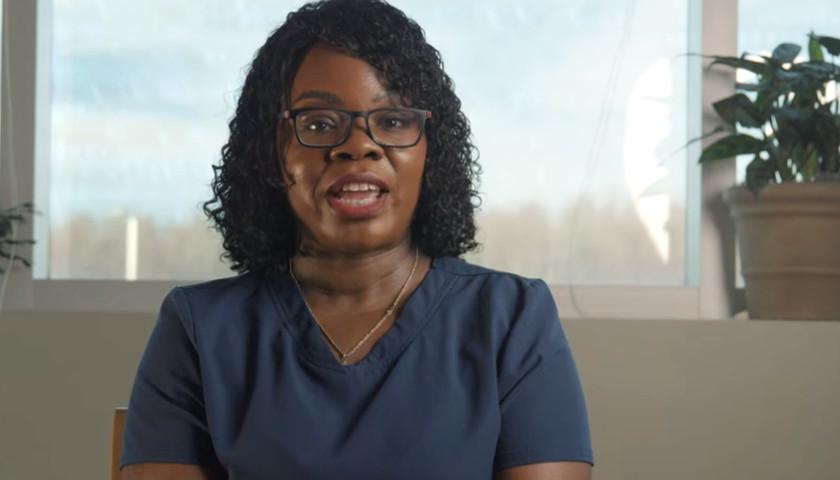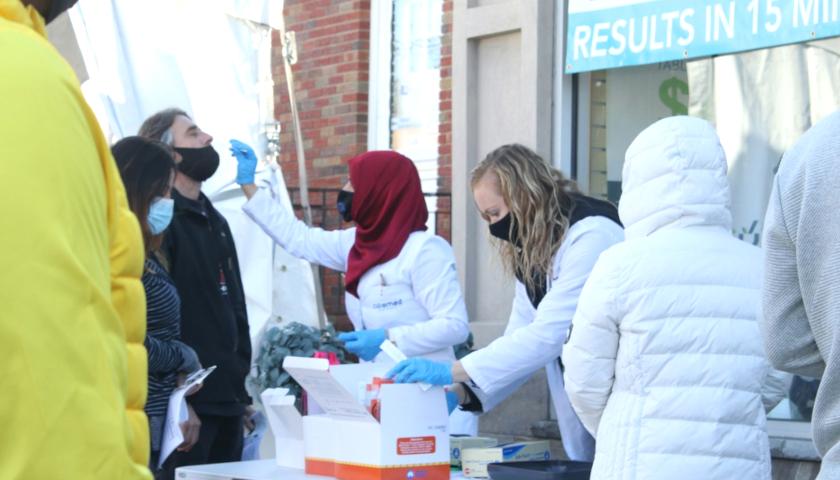by Marschall S. Runge
For all the attention paid to wondrous technologies, lifesaving new treatments and drugs, medicine remains by, for and about people.
This is both a blessing and a curse.
The heroic response to COVID-19 reminded us once again that there is no substitute for the tenacity, ingenuity and compassion of the human spirit. Although we know how many lives have been lost to the pandemic, the still uncalculated number of lives saved by caregivers is certainly far greater.
But skilled doctors and nurses cannot be created in a lab. The labor shortages affecting so many industries pose special threats to healthcare, which remains especially dependent on people – doctors, nurses, therapists, and many others – who work with people. Unlike many other businesses, hospitals, doctor’s offices and care facilities cannot automate their way out of this crisis.
Healthcare’s labor shortage is, ironically, a reflection of medicine’s success. The number of Americans aged 65 and over is at a record high – and the Census Bureau projects that by 2030 one in five Americans will be 65 or older. Older people require more healthcare services than their younger counterparts, so this happy boom is putting strains on the system.
The supply of caregivers is not keeping pace with demand and this is not a new phenomenon with the COVID-19 pandemic. The Association of Medical Colleges estimates that we will have a shortage of as many as 139,000 physicians by 2033. The US Bureau of Labor Statistics projects that 11 million additional nurses are needed in the next decade to avoid a further shortage. From all reports, it may be hard to fill these roles. Shiftmed’s Annual State of Nursing report found that 49% of respondents said they are at least somewhat likely to leave nursing during the next two years, while a recent study by the health consulting firm Mercer estimates that more than a million nurses will leave the workforce by 2026.
These numbers almost certainly underestimate the shortage because access to healthcare is quite variable in the U.S. Fewer healthcare providers choose to work low income communities, either in cities or in rural areas. We must address this disparity, and doing so will almost certainly require even more caregivers.
Given the myriad professional benefits healthcare offers – including stable, well-paying jobs in a mission-driven field – this shortage can seem mystifying.
Two main factors stand out. First is a broad societal phenomenon, the so-called Great Resignation, where mid-career people are taking stock of their lives and deciding what they really want to do. This is having an especially powerful impact on healthcare where the stresses and pressures of responding to the pandemic have tipped the balance for many people as they weigh the great meaning they derive from the work against its mental and physical tolls. The average age of doctors and nurses is around 50 – in a physically and emotionally field that already has high burnout rates. COVID-19 has exacerbated these negatives.
There may be little that can be done to reverse resignation or retirement rates.
The third contributor, which we must reverse, is our failure to develop new ways to attract and retain accomplished doctors, nurses and other support staff. Success will require that we rethink the culture of medicine, making it less rigid and more responsive, especially to the needs of younger people seeking to balance the demands of work and life in a high-stress field.
Consider that between 2001 and 2016, healthcare accounted for 9% to the total growth in the US economy but 29% of the increase in jobs, according to a report from the management consulting company McKinsey & Company. Essentially where other industries can use technology to boost productivity and replace workers, healthcare needs people to run the new machines. While we are constantly improving medical care, we are hard pressed to raise economic efficiency.
Salary and benefits will always be a vital part of this equation, especially for young doctors. A 2020 report from the Association of American Medical Colleges found that 73% of medical school graduate held student debt, which averaged about $200,000. In addition to physicians, the competitiveness of salaries, sign-on bonuses, and other incentives for other healthcare workers is on the rise. At Michigan Medicine, we are conducting a thorough review of our compensation structures against the current market, to ensure we are competitive and equitable. We are not alone in this quest.
Compensation changes will not be enough and we must also reform the culture of medicine, which has tended to be extremely demanding and hierarchical. For decades we have essentially told doctors and nurses that in exchange for relatively high salaries we expect a no questions asked commitment that puts their jobs first. This mindset has put the needs of patients and the organization ahead of those delivering the care. While this provides benefits on a day-to-day basis, it has huge long-term costs in the physical and emotional wellbeing of doctors, nurses and front-line staff.
To attract and retain workers, we must recognize the needs of our colleagues and empower them in the decision-making process. This means developing better channels of communication so workers can express their needs and ideas and creating better systems to address them. At Michigan Medicine, for example, we are trying to be more flexible in our scheduling and have greater transparency in our communication to replace a take it or leave it approach with one that is much more responsive to individual needs and voices. We are also asking leaders to rethink how they engage with their teams – and to demonstrate greater compassion and empathy for individual circumstances and needs versus a single approach for all.
We must also be more inclusive, making vertical power structures more horizonal so that caregivers can participate more fully in the decision-making process. As it empowers workers, this approach will also improve our organizations by encouraging the people doing the work to tell us how we can do better.
This not magic, but science: Workers who feel listened to, valued and respected are more content than those who do not. Transforming the culture of medicine so that it cares for caregivers may be our biggest challenge as we seek to attract and retain people in our vital work.
Honestly, this will not be easy. Change is always hard. Ironically, my confidence is bolstered by our experience during the global pandemic. While it made our jobs harder, putting even more stress and strain on our workers, it also forced us to recognize shortcomings in our business-as-usual way of getting things done. For example, telehealth has been an attractive option for years, but despite it obvious benefits, it was resisted by my profession. Its use suddenly exploded as COVID-19 forced us to limit patient access to hospitals and care facilities. At Michigan Medicine, the number of virtual visits increased from about 400 appointments per month before the pandemic to more than 30,000. That taught us that we are capable of great change, in response to a crisis. I believe we will do the same as we confront the urgent labor shortage.
– – –
Marschall S. Runge, MD, PhD, is Executive Vice President for Medical Affairs and Dean of the Medical School for the University of Michigan. He serves on the Board of Directors for Eli Lilly and Company. He is a contributor to RealClearHealth.








